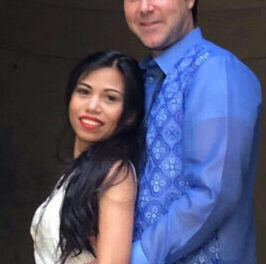“Beauty is about being comfortable in your own skin. It’s about knowing and accepting who you are.”
– Ellen Degeneres –
It’s 2025, and many of us have started working on our New Year’s resolutions to become better versions of ourselves. Some aim to lose weight, while others focus on saving money or improving their physical appearance.
And that’s perfectly fine!
This brings up an interesting question: Why do people, especially Filipinos, invest so much in their skin? More specifically, why is there such a strong aspiration for lighter skin?
The Whitening Products Phenomenon
Walk into any major supermarket in the Philippines, and you’ll find entire sections dedicated to beauty products, with whitening creams, soaps, and lotions taking center stage. Advertisements often feature models with flawless, fair skin, reflecting a deeply ingrained cultural preference.
In the Philippines, fair skin has long been associated with beauty, success, and social status. The influence of media and celebrities further reinforces this ideal. Many Filipino celebrities, icons of beauty and success, possess fair skin, which starkly contrasts with the natural complexion of the average Filipino.
Exploring Filipinos’ Preference through a Survey

To better understand this phenomenon, a brief social media survey was conducted on January 4, asking participants about their skin color preferences. The choices were:
- A. Mestiza (fair skin)
- B. Moreno (dark skin)
- C. No preference
Ten Filipinos living in the Czech Republic responded. Eight participants (80%) said they preferred lighter skin, while two (20%) had no preference. Not a single respondent chose Moreno.
Jessie, a 32-year-old Filipina living in Ostrava, shared that she prefers fair skin because it looks cleaner and more elegant.
Carlos, another respondent, explained that he prefers lighter-skinned women because he is “Moreno” (dark-skinned) and hopes his future children will have lighter skin to avoid being bullied at school.
This indicates that many Filipinos still prefer lighter skin and are willing to spend their hard-earned money on whitening products.
RECOMMENDED ARTICLES:
- Eden’s Garden Team Building 2025 Fosters Teamwork and Promotes Strong Workplace ValuesEden’s Garden Team Building 2025 held at the Park at Chodov Fortress last July 7, 2025
- Behind the Role: Gel Andersen Brings Kim Flores to Life in Netflix Hit, Secrets We KeepPrague, CZ – Continuing our feature on kababayans who were cast in the hit Netflix series Secrets We Keep, we sat down with Ms. Gel Andersen, who portrayed the interesting character of Kim Flores. Kim Flores is the sassy Pinay au pair and close friend of Angel and Ruby in the series. She’s the kind… Read more: Behind the Role: Gel Andersen Brings Kim Flores to Life in Netflix Hit, Secrets We Keep
- Filipino Slingshot Shooter Takes First Place at Czech Sniper CompetitionPRAGUE, CZ – Filipino participant Marvic Rivera won 1st place in the Sniper Slingshot Shooting event during the Pytlácká Stezka (Hunting Trail) gathering held at Tábořiště Louka near Vysoké Mýto, Czech Republic. While the event included multiple outdoor activities, Rivera’s top finish was in the slingshot shooting category. He was awarded a trophy, certificate, and… Read more: Filipino Slingshot Shooter Takes First Place at Czech Sniper Competition
A Different Perspective: Czech Views on Filipino Skin Tones
On the other hand, when we asked locals in the Czech Republic about Filipino skin tones, they overwhelmingly praised it, finding it beautiful. Interestingly, many preferred a tanned look, associating it with wealth and the ability to afford vacations.
In Western cultures, a sun-kissed complexion is often viewed as healthy, exotic, and attractive, the exact opposite of Filipino beauty ideals.

Zuzana, a 29-year-old Czech woman, said, “I wish I had skin like Filipinos. It’s naturally glowing, and they don’t need to spend hours in the sun or tanning beds.” This contrast highlights how beauty standards vary across cultures and how perceptions of skin color are deeply influenced by societal norms.
Another Czech named Michal who works at a travel agency said that he is fascinated of how diverse Filipinos look like. Some are darker in skin-tone and others are white like snow. And he realized it’s because of the diverse influences from different
How Filipinos Became Obsessed with Skin Color
According to an article by Esquire PH, the Filipino preference for fair skin dates back to the colonial period. Spanish colonizers associated darker skin with lower social status, and this notion persisted through centuries of colonization.
Additionally, the introduction of Christianity played a role. Images of a fair-skinned Jesus and Mary became symbols of purity and beauty, shaping Filipino standards. Over 300 years of Spanish rule left a lasting legacy, including a genetic mix that contributed to the fairer skin of some Filipinos.

Modern Perceptions of Skin Color
Today, the obsession with lighter skin continues to grow, fueled by aggressive marketing. Major supermarkets and advertisements consistently target women, promoting fair skin as the pinnacle of beauty. Unfortunately, these campaigns often succeed, perpetuating unrealistic ideals.
While there’s nothing wrong with wanting to improve one’s appearance, it’s crucial to remember that Filipinos are Southeast Asians, and brown skin is a significant part of their genetic heritage. It’s something to be celebrated, not overlooked.

Embracing Natural Beauty
The journey to self-acceptance starts with recognizing the beauty of diversity. Filipinos should feel proud of their natural skin tones, which are admired in many parts of the world.
Share us your thoughts?
0 responses to “Why Are Filipinos Addicted to Whitening Products”
GET IN TOUCH












Leave a Reply